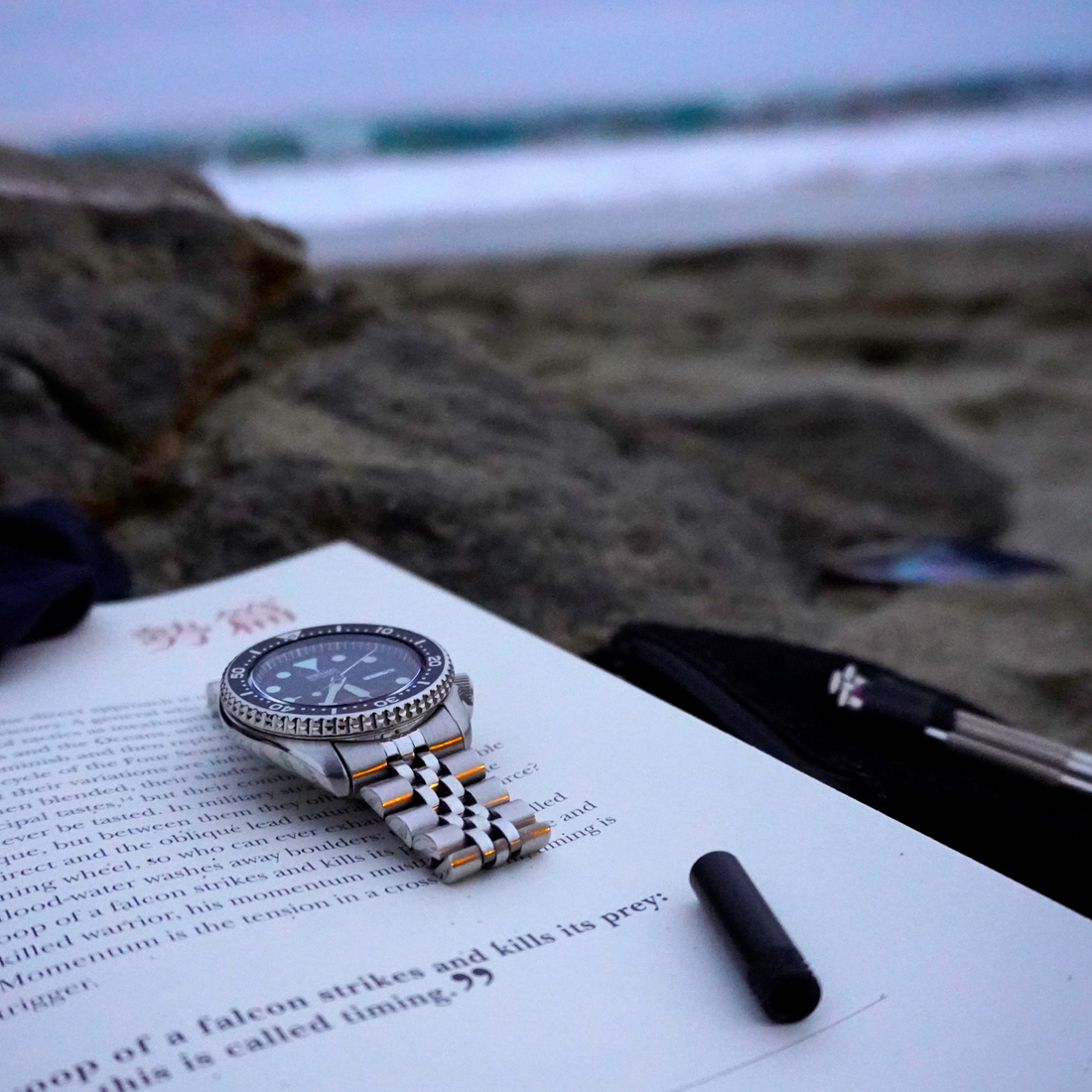
The History and Importance of the Dive Watch: A Legacy Beneath the Waves
Share
Few types of wristwatches carry as much mystique and utilitarian appeal as the dive watch. Born out of necessity and refined through decades of innovation, the dive watch has become a symbol of adventure, precision, and resilience. From the early days of deep-sea exploration to modern-day scuba diving and luxury watch collections, dive watches have evolved to meet the rigorous demands of underwater environments while maintaining a style that appeals to both professionals and enthusiasts alike. This article explores the rich history of the dive watch, tracing its origins, technological advancements, and enduring significance in both horology and popular culture.
The Early Days of Diving: The Need for a Specialized Watch
The history of the dive watch is deeply intertwined with the history of diving itself. In the early 20th century, as diving technology advanced, the need for reliable underwater timekeeping became increasingly apparent. Divers needed a watch that could withstand the pressure of deep water, resist corrosion from saltwater, and remain visible in low-light conditions. Accurate timekeeping was essential for calculating the amount of time spent underwater, particularly with the advent of modern scuba diving, where exceeding certain time limits could result in decompression sickness.
The first attempts to create water-resistant watches date back to the 1920s. In 1926, Rolex introduced the Oyster, the world’s first water-resistant wristwatch, which featured a patented screw-down crown and case back. While not specifically designed for diving, the Oyster laid the groundwork for the development of the dive watch by proving that a watch could be effectively sealed against water ingress.
The Birth of the Modern Dive Watch: Rolex and Omega
The modern dive watch as we know it began to take shape in the 1950s, driven by both military needs and the growing popularity of recreational diving. Two brands, Rolex and Omega, were at the forefront of this development.
Rolex Submariner
In 1953, Rolex introduced the Submariner, a watch that would become synonymous with dive watches. The Submariner was the first wristwatch to be water-resistant to a depth of 100 meters (330 feet) and featured a rotating bezel, which allowed divers to track their time underwater easily. The bezel, which could only be turned in one direction, was a crucial safety feature—if accidentally moved, it would show less time remaining, never more, preventing potentially dangerous miscalculations.
The Submariner quickly became a favorite among professional and recreational divers alike, and its design set the standard for dive watches. Its legibility, robust construction, and functional aesthetics have made it one of the most iconic watches in horological history.
Omega Seamaster
Around the same time, Omega introduced the Seamaster line, which had been launched in 1948 but evolved significantly in the 1950s to meet the needs of divers. The Seamaster 300, introduced in 1957, was Omega’s answer to the Submariner. It was water-resistant to 200 meters (660 feet) and featured a rotating bezel and highly legible dial, making it ideal for underwater use.
The Omega Seamaster gained widespread recognition when it was adopted by various military forces, including the British Royal Navy. Its reputation for reliability and durability in harsh conditions cemented its place in the pantheon of great dive watches.
The Evolution of Dive Watches: Technological Innovations
As diving technology and techniques advanced, so too did the capabilities of dive watches. Throughout the 1960s and 1970s, watchmakers pushed the boundaries of water resistance, durability, and functionality.
The Blancpain Fifty Fathoms
Another key player in the early history of dive watches is Blancpain, which introduced the Fifty Fathoms in 1953. Developed in collaboration with French naval officer Captain Robert "Bob" Maloubier, who led the French combat swimmers, the Fifty Fathoms was designed specifically for military diving operations. It featured a unidirectional rotating bezel, large luminous markers, and an automatic movement—all hallmarks of the modern dive watch. The Fifty Fathoms was water-resistant to 50 fathoms (about 91 meters or 300 feet), making it one of the most capable dive watches of its time.
The Introduction of the Helium Escape Valve
As commercial and military diving began reaching greater depths, a new challenge arose—how to protect watches from the effects of helium gas buildup during saturation diving. Helium molecules, small enough to penetrate the watch case under pressure, could cause the crystal to pop off as the diver ascended and the pressure decreased.
In response, Rolex and Doxa developed the helium escape valve in the late 1960s. This valve allowed helium to safely escape from the watch case without compromising its water resistance. The Rolex Sea-Dweller, introduced in 1967, was one of the first watches to feature this technology, offering water resistance to 610 meters (2,000 feet), later increased to 1,220 meters (4,000 feet) with subsequent models. The helium escape valve became a standard feature in professional dive watches designed for extreme depths.
Advances in Materials and Design
The evolution of dive watches also saw significant improvements in materials and design. Cases were made from corrosion-resistant stainless steel, and later from titanium, ceramic, and even carbon composites. Crystals evolved from acrylic to scratch-resistant sapphire, enhancing durability and legibility under water. Dials and hands were designed with high-contrast colors and large, luminous markers to ensure readability in low-light conditions.
These innovations not only improved the functionality of dive watches but also contributed to their distinct aesthetic, which remains popular in both diving and fashion circles.
The Cultural Impact of Dive Watches
Beyond their technical achievements, dive watches have had a profound cultural impact. They have become symbols of exploration, adventure, and resilience. Dive watches are often associated with iconic figures and moments in history, further enhancing their allure.
James Bond and the Omega Seamaster
Perhaps the most famous dive watch in popular culture is the Omega Seamaster, worn by James Bond since the 1995 film "GoldenEye." Chosen for its blend of elegance and ruggedness, the Seamaster has become an integral part of the Bond image. Its presence on the wrist of the world’s most famous spy has cemented its status as a symbol of sophistication and capability, blending seamlessly into both underwater missions and high-stakes casinos.
The Tool Watch for Everyman
While dive watches were initially developed for professional divers and military personnel, they have transcended their original purpose to become popular with the general public. Their durability, practicality, and versatile design make them suitable for a wide range of activities, from sports and outdoor adventures to everyday wear. The dive watch’s ability to transition from rugged environments to formal settings has made it a favorite among watch enthusiasts and collectors.
The Modern Dive Watch: A Blend of Tradition and Innovation
Today, the dive watch continues to evolve, balancing the traditions of the past with cutting-edge technology. Modern dive watches often feature advanced materials, such as ceramics and high-tech composites, that offer greater scratch resistance and lighter weight. Movements have become more accurate and reliable, with many models offering chronometer certification.
In addition to mechanical watches, dive watches with digital and smart technology have also gained popularity. These watches offer a host of features, including depth gauges, dive logbooks, and integration with dive computers, catering to the needs of both recreational divers and professionals.
Despite these advancements, the essential characteristics of the dive watch—robust construction, water resistance, legibility, and a unidirectional bezel—remain unchanged. These timeless features continue to define what it means to be a dive watch.
Going Above and Beyond
The dive watch is more than just a tool; it is a testament to human ingenuity, resilience, and the enduring spirit of exploration. From its origins in the early days of diving to its current status as a cultural icon, the dive watch has proven itself to be an essential companion for those who venture into the depths of the ocean. Its evolution reflects the challenges and triumphs of underwater exploration, while its enduring appeal lies in its perfect blend of form and function.
Whether worn by professional divers, military personnel, or watch enthusiasts, the dive watch continues to inspire and captivate. It is a reminder of the profound connection between timekeeping and the sea, a connection that has shaped the course of horological history and will undoubtedly continue to influence the future of watchmaking.
